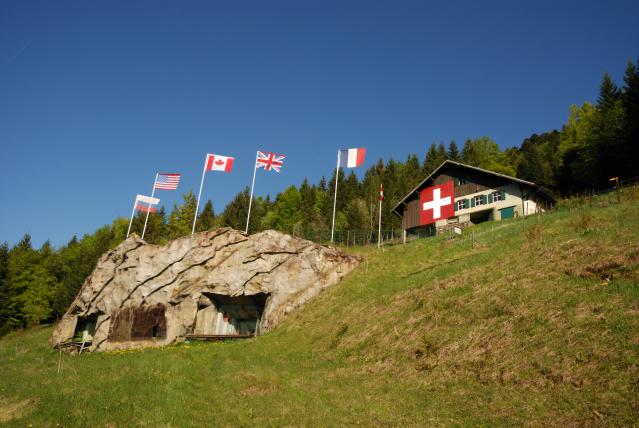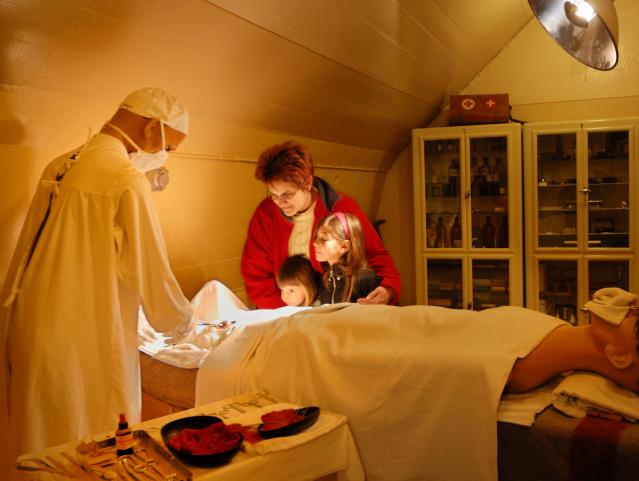



Creusé dans la roche, il fait désormais partie du patrimoine militaire.
Construit de 1937 à 1941, le fort militaire de Pré-Giroud à Vallorbe avait pour mission d’interdire le passage du Col de Jougne à toute armée étrangère et de soutenir la défense de la frontière franco-suisse pendant la Deuxième Guerre mondiale.
En 1945, ce fort d’artillerie d’arrêt, creusé dans la roche, abritait 200 hommes. Il est constitué de 6 blockhaus à une casemate, reliés par un réseau de galeries qui desservent des magasins de munitions, une salle des machines et une caserne.
A l’extérieur, trois ouvrages indépendants sont visibles. Ils étaient entourés d’une double rangée de barbelés, de champs de mines et de protections anti-char.
Racheté en 1988 par une fondation privée, le fort de Pré-Giroud est désormais accessible aux visites. Il donne une idée des conditions de vie des militaires, de leur confinement, mais aussi d’un armement -canons, lance-mine, arquebuse et mitrailleuses- d’une époque révolue.
Depuis l’esplanade du fort, sur les hauts de Vallorbe, la vue sur le Col de Jougne est imprenable et magnifique. Il est facile d’évaluer l’importance stratégique d’un tel endroit.
Du
11 mai 2024
au
27 octobre 2024
Lundi
Mardi
Mercredi
Jeudi
Vendredi
Samedi
Dimanche
Groupe (dès 12 pers.)
Individuel
Horaires d’ouverture 2024 :
11.05 au 28.06 et du 19.08 au 27.10, samedi, dimanche et jours fériés :
Départ des visites guidées à 10h, 13h, 15h
Du 29.06 au 18.08 du mercredi au dimanche.
Départ des visites guidées 10h, 13h, 15h
Ouvertures spéciales sur demande de mai à octobre.
Pour les groupes, sur réservation : café/croissant, apéritif (avec spécialités locales), fondue, service traiteur.
Agence ADNV / Office du tourisme du Nord vaudois
Avenue de la Gare 2
1400 Yverdon-les-Bains
T +41 24 423 03 13
Inscrivez-vous à notre newsletter